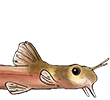https://doi.org/10.1007/s00484-019-01703-3
https://link.springer.com/article/10.10 ... 19-01703-3
Abstract
The main objectives of the present study were to quantify the environmental, especially temperature and rainfall, effects on breeding phenology of selected catfish species and to predict changes in breeding phenology of the selected species in relation to climatic variability for the Ganga River Basin. The study showed that changes in rainfall pattern may have the most profound effect on gonad maturation and breeding of and followed by the effect of increased water temperature due to rising air temperature. Indication of region-specific adaptation was noticed in reproductive phenology of based on local trends of warming climate. The other habitat parameters, such as dissolved oxygen, alkalinity, nitrate, and phosphate, were correlated with gonad maturity and spawning. Climatic variability may bring region-specific changes in breeding phenology of fish species in the Ganga River. Under a warming climate, changes in precipitation pattern manifested into riverine flow pulse may be the key driver in dictating breeding phenology. Our study indicates as a climate sensitive species that may be selected as a target species for climate change impact studies.
- Keywords: Breeding, M. tengara, M. cavasius, E. vacha, River Ganga, Climate change, Modeling








